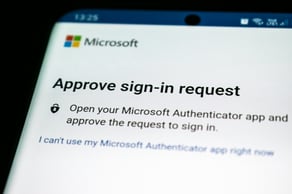What is the supply chain, and how can I secure it?

When we talk about IT security, the conversation often revolves around firewalls, passwords, and the systems we control ourselves. But one of the biggest risks to both data security and business continuity often lies outside your own infrastructure: in the supply chain.
The supply chain consists of all the external parties you collaborate with digitally. This could be IT providers, cloud services, accounting firms, consultants, or software vendors connected to your systems—often including their own subcontractors as well. In practice, the supply chain is everything you’re connected to, directly or indirectly. And it’s precisely these connections that create risk for your digital security.
When a cyberattack hits through a third party
In many cases, it’s not your own systems that are compromised first—it’s an external partner. One of the most well-known examples is the SolarWinds incident in 2020, where a software update was used to spread malware to thousands of customers. Similarly, an attack via Kaseya in 2021 affected over 1,500 organizations, even though they had no direct contact with the attackers.
These incidents show how threat actors deliberately target suppliers for cyberattacks, as this gives them access to a much larger pool of potential victims. Even if you do everything right internally, a data breach at a third party can still impact you—and leave you dealing with the consequences.
When you bear the responsibility, even if the fault wasn’t yours
Even when a supplier is responsible for the security failure, it’s often you who owns the risk. Data breaches, downtime, loss of customer information, and fines for GDPR violations can all hit hard—both financially and reputationally. You may also lose customer trust, or see production come to a halt.
That’s why it’s critical to know who has access to your systems, what data they can reach, and how their security routines actually work in practice. Many organizations today lack both the overview and the procedures needed to secure their supply chain.
How to protect your supply chain
The first step is to gain visibility: Who is connected to your systems, what permissions do they have, and what data flows between you? Next, you need to set clear IT security and procedural requirements in your agreements. Many supplier contracts mention security only in passing—without providing the substance needed in a real situation.
At Sicra, we help customers map their supplier landscape and establish effective security requirements, both technical and organizational. We also offer CISO-for-hire services, where an experienced Chief Information Security Officer (CISO) helps you establish and follow up on security governance, including risk assessments and third-party requirements. This is especially useful for organizations that don’t have an internal CISO but still want professional support in their security work.
We also offer modern SOC services (Security Operations Center) in collaboration with Arctic Wolf. These solutions provide continuous monitoring and incident response—even when attacks come through the supply chain. With 24/7 monitoring and expert threat analysis, this is a level of security that more and more Norwegian organizations are choosing.
Preparation is also training
Security isn’t only about technology—it’s about people. Many cyberattacks start with an email from a supplier who has been compromised. With training platforms like Nimblr or Managed Awareness Training from Arctic Wolf, we help employees build the knowledge they need to recognize and avoid digital threats. Security awareness training is a simple but powerful investment in your cybersecurity.
We understand that not every organization has a large budget. But with risk awareness, a clear minimum set of security requirements, and a concrete plan for handling data breaches or incidents, you can go a very long way.
A realistic approach for today’s threat landscape
Securing your supply chain doesn’t mean you have to control everything. But you do need to understand your exposure and make smart priorities. Maybe you need a full SOC service. Maybe you just need help reviewing your contracts. Or maybe you need a CISO—just one day a week.
Whatever your needs, Sicra is here to help you find the right level of security for your organization. Preparation has a cost—but being unprepared can cost far more, in money, in trust, and in future growth.
Explore more

Attack Conference 2025: Real threats and new regulations require action

Six steps that can save Norway from the next cyberattack

Three days to attack: Why vulnerabilities must be closed faster

